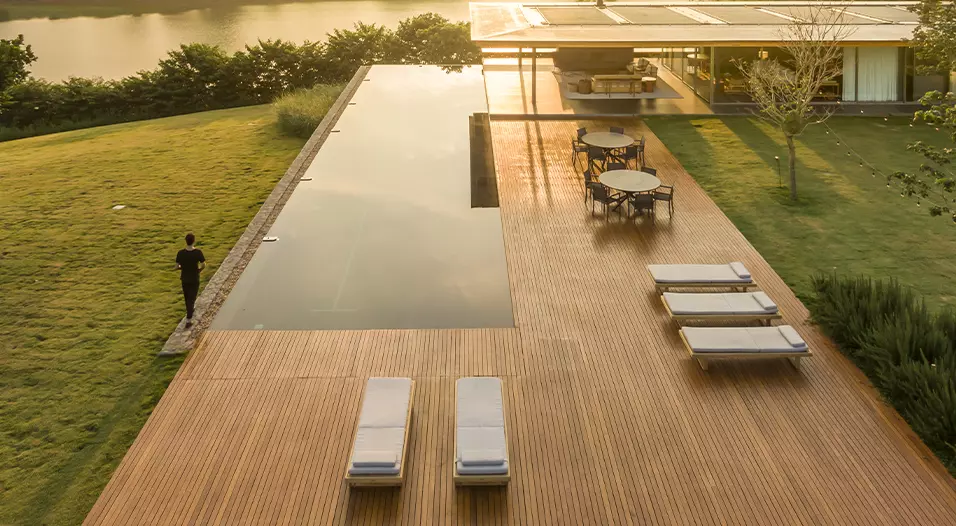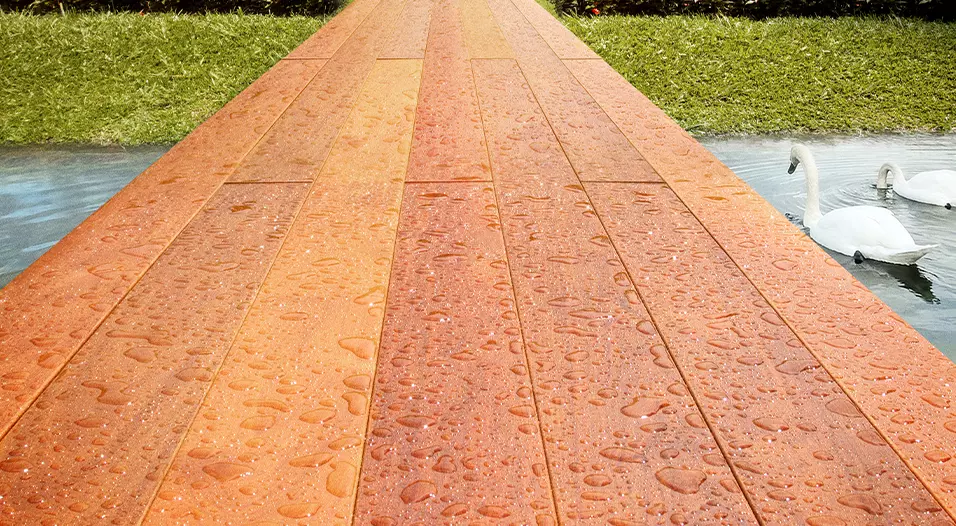Living in North America, we’re no strangers to the harshness of winter. And during this season, having an Ipe decking brings peace of mind—no worries about snow causing any damage. But hey, our country’s diverse, and it’s not just about snow, right? That’s why we’ve put together this blog post for our customers all across the map. We want to explain why chilling with Ipe is a breeze, no matter where you call home or what kind of weather you’re up against. Keep reading to find out more.

IPE vs Sun
Ipe wood stands firm against the unrelenting force of the sun, thanks to its exceptional durability and innate resistance to weathering, fortified by natural oils. However, it’s important to note that Ipe will naturally evolve in appearance when left unfinished. Over time, it gracefully weathers, transitioning into an elegant gray patina, showcasing its resilience to the elements. To uphold its original warm tones and hues, applying a UV protective finish is crucial. Yet, whether treated or untreated, Ipe remains structurally robust, no matter what the sun brings. Its enduring strength persists, offering longevity and steadfastness even as it undergoes a color metamorphosis.
IPE vs Water

One standout feature of Ipe is its impenetrable water resistance. Ipe’s natural oils and dense grain structure exhibit exceptional resistance to water absorption. This quality ensures that it won’t warp, split, or crack when consistently exposed to moisture, making it an excellent choice for outdoor showers or decks near water features.

With excellent durability and a lifespan of over 70 years, Ipe wood stands as a testament to longevity in decking materials. Its innate resistance to mold and fungi ensures a low-maintenance and hygienic surface, allowing you to be at ease even when it’s pouring outside.
IPE vs Snow
Hardwoods are called ‘hard’ for a reason. Ipe is ideal for decking, even on days with a feet of snow. What makes ipe decks truly remarkable is their ability to endure freezing weather during winter. You won’t need to fret about damage from growing mildew or water seeping into cracks. Your deck will maintain its pristine condition.
Builders opt for dense hardwoods when constructing decks in regions with distinct seasons. Being one of the densest hardwoods available in North America, Ipe naturally became the preferred choice for decking. It repels water and can withstand the detrimental effects of moisture, retaining its original form even after a winter storm.

However, when it comes to snow, you should be aware that a substantial amount of it can add weight to the deck, requiring regular removal. To be safe about the weight, you need to include an extra weight load capacity right from the start of the project. And here’s what’s even better: the outstanding durability of Ipe guarantees strong resistance, enabling you to shovel snow without worrying about scratching and preserving the natural beauty of the hardwood.
To keep your Ipe decking in prime condition, we’ve prepared three essential tips: avoid using salt on your Ipe decking, as it can lead to cracks and additional damage to your deck boards; apply a quality stain to your Ipe deck to slow down the aging process, it adds a protective layer that helps withstand winter elements; prepare your Ipe decks for winter by thoroughly removing any debris or dirt. If left unchecked, these materials can become trapped and potentially lead to mildew issues.

Get it from the leading supplier in the U.S.
Whether you’re envisioning a luxurious outdoor shower, a deck by the pool, or any project in a wet area, find all the Ipe profiles you need at Lumber Plus – home to the largest inventory of Ipe wood in North America. Our team of experts is eager to showcase the finest pieces of Ipe on the market.






